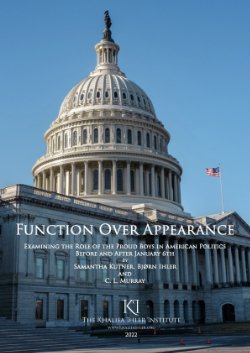By J.M. Berger
The Turner Diaries, the infamous racist dystopian novel by neo-Nazi William Luther Pierce, has inspired more than 200 murders since its publication in 1978, including the single deadliest act of domestic terrorism in U.S. history, the Oklahoma City bombing. The book is arguably the most important single work of white nationalist propaganda in the English language, but it is not a singular artifact. The Turner Diaries is part of a genre of racist dystopian propaganda dating back to the U.S. Civil War. This paper will document the books that directly and indirectly inspired Turner and examine the extensive violence that the novel has inspired. By comparing and contrasting The Turner Diaries to its less-remembered predecessors, this paper analyses the reasons for the novel’s lasting impact, including its focus on rational choices over identity choices, its simplification of white nationalist ideology, its repeated calls to action, and the powerfully persuasive nature of dystopian narratives, which can be understood as a secular analogue for religious apocalyptic texts.
The Hague: International Centre for Counter-Terrorism, 2016. 50p.





















